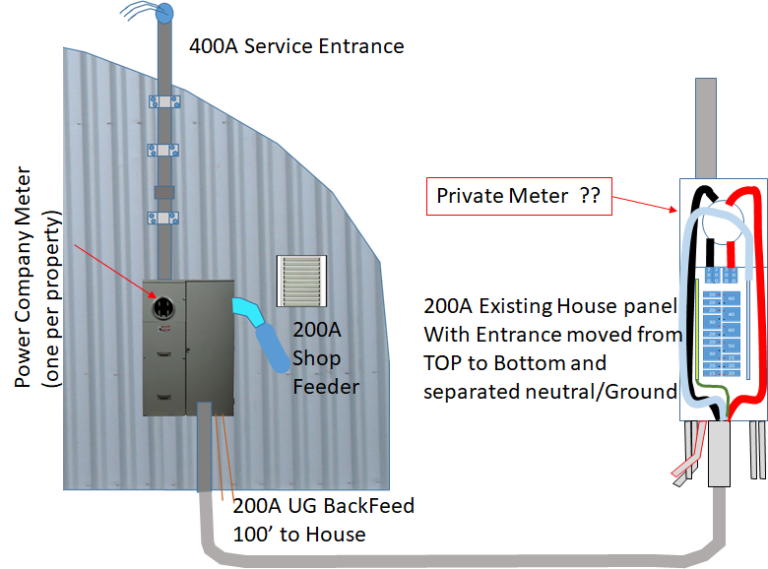Can You Plaster a Wall on Top of Wallpaper? Expert Tips Revealed
Yes, you can plaster a wall on top of wallpaper. But it’s not always the best idea.
Plastering over wallpaper might seem like a quick fix. Yet, it can lead to problems later on. The wallpaper might peel off or bubble, causing the plaster to crack. Before you decide, it’s important to understand the risks and benefits.
Knowing the right steps can save you time and trouble. In this post, we’ll explore whether plastering over wallpaper is worth it. We’ll look at why it might not be the best solution. And we’ll offer tips on how to prepare your wall if you choose to go ahead. Read on to learn the best practices for a smooth, lasting finish.
Assessing The Wallpaper Condition
Before you start plastering a wall over wallpaper, it’s crucial to assess the condition of the wallpaper itself. Not all wallpapers are created equal, and some may not be suitable for plastering over. This step ensures that you avoid future headaches and unnecessary work. Let’s break it down into a couple of essential checks.
Checking For Loose Sections
First and foremost, you need to check for any loose sections of wallpaper. Loose wallpaper can wreak havoc on your plastering efforts. Imagine investing time and effort into plastering, only for it to peel off because the wallpaper underneath wasn’t secure. Here’s a simple way to do it:
- Run your hands gently over the wall, feeling for any areas that might be loose or bubbling.
- Use a utility knife to lightly score the wallpaper in various spots. If it lifts easily, it’s too loose.
- Pay attention to the corners and edges, as these areas are most prone to lifting.
Spotting these issues early can save you a lot of trouble down the line. If you do find loose sections, consider removing the wallpaper entirely or at least securing those parts before plastering.
Identifying Problem Areas
Next, identify any problem areas on the wallpaper. This involves looking for stains, mold, or any other damage that could affect the adhesion of the plaster. Here are some tips:
- Stains: Water stains or any discoloration can indicate underlying issues. These spots might need to be treated or removed.
- Mold: Mold is a serious issue. Plastering over mold can lead to health problems and further structural damage. Moldy areas should be cleaned and treated before proceeding.
- Tears and Holes: Small tears can be patched, but large holes or extensive damage may require the removal of the wallpaper.
By identifying and addressing these problem areas, you ensure a smooth surface for your plaster to adhere to, leading to a better finish and longer-lasting results.
So, before you get your hands dirty with plaster, take a moment to assess the condition of your wallpaper. It’s a small step that can make a big difference.

Credit: www.reddit.com
Preparing The Wallpaper Surface
Preparing the wallpaper surface is crucial for successful plastering. Proper preparation ensures the plaster adheres well and lasts longer. Follow these steps to get the best results.
Cleaning And Priming
Start by cleaning the wallpaper surface. Remove dust and dirt using a damp cloth. Avoid soaking the wallpaper to prevent it from peeling. Let the surface dry completely before proceeding.
Next, apply a primer. Choose a primer suitable for wallpaper surfaces. This step helps the plaster stick better. Apply the primer evenly and let it dry as per the instructions on the product.
Sealing The Wallpaper
Sealing the wallpaper is essential to prevent it from absorbing moisture. Use a PVA (polyvinyl acetate) sealer for best results. Dilute the sealer with water in a 1:1 ratio.
Apply the sealer with a brush or roller. Ensure you cover the entire surface. Allow the sealer to dry completely. This step creates a barrier between the wallpaper and plaster.
Once the sealer is dry, the wallpaper surface is ready for plastering. Proper preparation ensures a smooth and durable finish. Take the time to follow each step carefully.
Choosing The Right Plaster
Choosing the right plaster can be daunting, especially if you’re considering plastering over wallpaper. But fear not, this guide will help you select the best plaster for your project. We’ll break down different types of plaster and how to choose the best one for your needs.
Types Of Plaster
There are several types of plaster you can use. Each has its own unique properties and uses. Let’s look at some common types:
- Gypsum Plaster: Known for its smooth finish and quick drying time. Ideal for interior walls.
- Lime Plaster: Offers a breathable finish, great for older buildings. It’s more flexible and less prone to cracking.
- Cement Plaster: Very durable, often used for exterior walls. It’s moisture-resistant but can be heavy.
- Clay Plaster: An eco-friendly option, great for natural building projects. It’s easy to work with and non-toxic.
Selecting The Best Option
Now that you know the types, how do you choose the best one for plastering over wallpaper? Here are some factors to consider:
- Wall Condition: Check if the wallpaper is firmly attached. If it’s peeling, plaster won’t stick well. Gypsum plaster is usually best for smooth, even surfaces.
- Room Type: For moisture-prone areas like bathrooms, cement plaster is a good choice. It resists water and lasts longer.
- Ease of Use: If you’re new to plastering, gypsum plaster is user-friendly. It dries quickly and is easy to apply.
- Environmental Impact: For eco-conscious projects, clay plaster is the way to go. It’s natural and sustainable.
Pro Tip: Always test a small area first. Apply a bit of plaster over the wallpaper and see how it adheres. Better safe than sorry!
Choosing the right plaster doesn’t have to be overwhelming. With these tips, you’ll be ready to tackle your project with confidence. Remember, preparation is key, and the right plaster will make your job much easier. Happy plastering!

Credit: www.reddit.com
Applying The Plaster
Applying plaster over wallpaper can be tricky. But it is possible. With the right steps, you can achieve a smooth finish.
Step-by-step Guide
First, prepare your workspace. Cover the floor and furniture with drop cloths. Next, clean the wallpaper with a damp cloth. This removes dust and grime. Let it dry completely.
Apply a primer to the wallpaper. This helps the plaster stick better. Let the primer dry as per the manufacturer’s instructions. Then, mix your plaster. Follow the instructions on the plaster bag carefully.
Start applying the plaster. Use a trowel for even coverage. Spread a thin layer over the wallpaper. Work in small sections to avoid drying out the plaster. Smooth out any bumps with the trowel.
Allow the first layer to dry. This usually takes 24 hours. After it dries, apply a second layer if needed. Sand the plaster lightly once it is fully dry. This helps achieve a smooth finish.
Common Mistakes To Avoid
Do not skip the primer. Skipping it can cause plaster to peel. Avoid applying thick layers. Thick layers take longer to dry and may crack. Do not rush the drying process. Give the plaster enough time to set.
Do not sand too aggressively. This can damage the plaster and wallpaper. Avoid using low-quality plaster. It may not adhere well and can lead to a poor finish.
Follow these steps carefully. This ensures a smooth and lasting plaster finish over wallpaper.
Drying And Curing Process
Plastering a wall on top of wallpaper can lead to poor adhesion and peeling. It’s best to remove the wallpaper first. This ensures a smooth surface for the plaster to bond properly.
Plastering a wall on top of wallpaper requires careful drying and curing. Ensuring the plaster dries and cures properly prevents cracks and ensures durability. This process involves several steps and conditions. Here’s what you need to know.Optimal Drying Conditions
The drying process needs the right conditions. Room temperature should be between 50-70°F. Good ventilation is essential. Airflow helps the plaster dry evenly. Avoid direct sunlight on the wall. It can cause uneven drying. Humidity levels should be low. High humidity slows the drying process. Keep windows slightly open for air circulation.Timeframes For Curing
The curing process is crucial. Typically, plaster takes 24-48 hours to dry. This is the initial drying phase. Full curing can take up to 28 days. During this time, avoid heavy decorations or nails. Patience ensures the best results. Check for any cracks during curing. If any appear, address them quickly. Proper curing ensures a strong, durable finish. “`Finishing Touches
After plastering a wall on top of wallpaper, the final steps make a big difference. These finishing touches ensure a smooth, beautiful wall. Pay attention to each detail for the best result.
Sanding And Smoothing
Once the plaster is dry, sanding starts. Use fine-grit sandpaper to smooth the surface. Be gentle to avoid damaging the new plaster. Check for any rough spots. Sand them down until the wall feels even. This step prepares the wall for painting.
Painting And Decorating
After sanding, the wall is ready for paint. Choose a primer first. Apply it evenly to create a good base. Once the primer dries, pick your favorite color. Paint with smooth, even strokes. Let the paint dry completely.
Next, think about decorating. Add pictures or shelves to make the space unique. These final touches bring life to your walls. Enjoy the new look of your freshly plastered and decorated wall.
Maintenance Tips
Plastering a wall on top of wallpaper can be a tricky task, but with the right approach, it is entirely possible. Once you’ve successfully plastered over wallpaper, the next step is to ensure your new wall finish remains in top condition. Proper maintenance is key to preserving its look and durability. In this section, we will delve into some essential maintenance tips. These tips will help you keep your plastered wall looking pristine for years to come.
Regular Inspections
Just like any other part of your home, your newly plastered wall requires regular inspections. Make it a habit to check the wall at least once a month. During these inspections, pay attention to:
- Cracks: Small cracks can appear over time. Catching them early can prevent bigger problems.
- Discoloration: Look for any changes in color, which might indicate moisture or other issues.
- Bubbles: Bubbles under the plaster may suggest that the wallpaper underneath is detaching.
By keeping an eye out for these signs, you can address issues before they become major headaches.
Repairing Minor Damages
Even with regular inspections, minor damages can still occur. The good news is, these can often be fixed quickly and easily. Here’s how you can tackle common problems:
- Small Cracks: Use a small amount of filler to cover the crack. Smooth it out and let it dry before sanding and painting over it.
- Bubbles: If you notice bubbles, gently puncture them with a pin to release trapped air. Apply a small amount of adhesive to secure the plaster back in place.
- Discoloration: For minor discoloration, a touch-up with matching paint can do wonders. However, if it’s due to moisture, address the underlying issue before repainting.
Repairing these minor issues promptly will help maintain the overall appearance and integrity of your plastered wall.
Remember, consistent maintenance is the key to a long-lasting, beautiful wall. By incorporating these simple tips into your routine, you can enjoy your plastered walls for many years without the hassle of major repairs.
Expert Advice
Plastering a wall on top of wallpaper can be tricky. It needs careful consideration and expert advice. This section provides professional insights. Learn when to seek help and understand cost considerations.
When To Seek Professional Help
Plastering over wallpaper is not always simple. The wallpaper might not be suitable. It could peel off or create an uneven surface. If you are unsure, seek professional help. Experts can assess the wall condition. They ensure a smooth and durable finish.
Professional plasterers have experience. They can handle complex situations. They use the right tools and materials. This ensures the plaster adheres properly. They also spot issues that non-experts might miss. For a flawless result, consider hiring a pro.
Cost Considerations
The cost of plastering over wallpaper can vary. Factors include wall size, wallpaper type, and plaster quality. Removing wallpaper adds to the cost. Professional services might seem expensive. But they save time and ensure quality.
DIY plastering might cut costs. But it has risks. Mistakes can be costly to fix. A poor job may need redoing. Factor in material costs and potential repairs. Weigh the cost of professional help against potential DIY issues. Investing in expertise can be cost-effective in the long run.

Credit: www.reddit.com
Frequently Asked Questions
What Happens If You Plaster Over Wallpaper?
Plastering over wallpaper can cause adhesion issues. The plaster may not bond well, leading to cracks and peeling. It’s best to remove wallpaper first.
Do You Need To Remove Wallpaper Before Plastering?
Yes, you need to remove wallpaper before plastering. Wallpaper can prevent proper adhesion and create an uneven surface. Removing it ensures a smooth, professional finish. Use a wallpaper steamer or scraper for best results.
How To Prepare A Wallpapered Wall For Plastering?
Remove wallpaper completely. Clean the wall to eliminate adhesive residue. Sand the surface for smoothness. Apply a primer. Let it dry before plastering.
Can You Skim Coat Over Wallpaper Without Removing It?
You can skim coat over wallpaper, but it’s not recommended. Wallpaper may peel and cause adhesion issues. Removing it ensures a smoother, longer-lasting finish.
Conclusion
Plastering over wallpaper can be tricky. It may save time initially. But, it often causes problems later. The wallpaper might peel. The plaster might crack. Removing wallpaper first is usually best. It ensures a smooth, long-lasting finish. Always prepare the wall properly.
This ensures the plaster sticks well. Remember, a little extra work now saves headaches later. Your walls will look great and last longer. Happy plastering!

My name is Maria, A professional merge game player with years of experience mastering games like Merge Dragons, Merge Gardens, Merge Mansion, and more. My passion for uncovering the best strategies, solving tricky puzzles, and discovering hidden secrets led her to create MergeGameplay.com.





